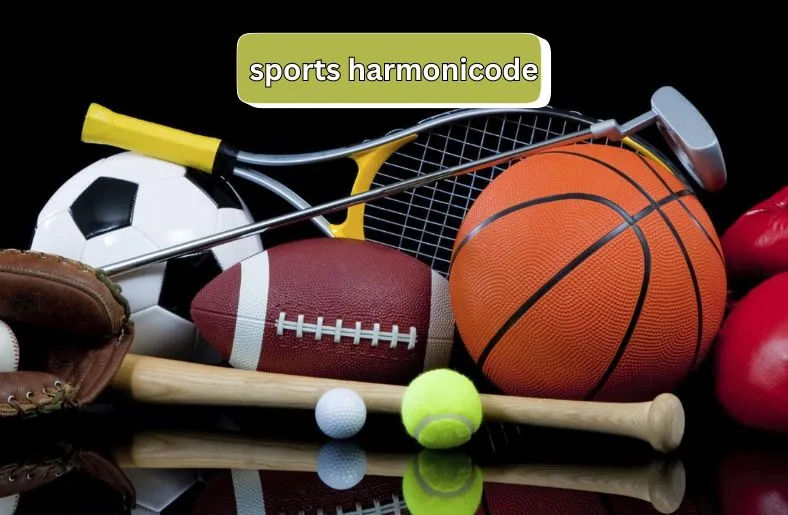Introduction
Sports harmonicode is a new and exciting idea that mixes music with athletic performance. Imagine athletes moving to the rhythm of a song while they train or compete. This blend of music and sports can help athletes improve their skills and have more fun.
Using music in sports isn’t just about enjoyment; it also boosts focus and energy. Many athletes find that music helps them time their movements better, making them more precise. As a result, sports harmonicode is becoming popular among different kinds of athletes.
In this blog post, we will explore what sports harmonicode is all about. We will look at its benefits, how it is used in training, and what the future might hold. Get ready to discover how music can elevate your game!
The Concept of Sports Harmonicode
Sports harmonicode is a unique approach that blends music with athletic training. It encourages athletes to move in sync with rhythms and melodies. This connection between music and movement enhances focus and motivation.
At its core, sports harmonicode emphasizes timing. Athletes learn to match their actions to beats, improving their performance. This method can be applied in various sports, from running to dancing. For instance, dancers use music to create beautiful routines. Similarly, runners can use music to maintain their pace.
Another important aspect is the emotional connection. Music can inspire athletes, helping them push through tough moments. When athletes listen to their favorite songs, they feel energized and ready to perform. This emotional boost can lead to better results.
Moreover, sports harmonicode fosters creativity. Athletes are encouraged to explore new ways of moving. They can experiment with different music styles, making training more enjoyable. This creativity can also lead to unique performances that stand out in competitions.
In addition, using music in sports promotes teamwork. Teams can create synchronized routines, working together to achieve harmony. This teamwork not only builds camaraderie but also improves coordination among members.
Benefits of Integrating Music into Sports Training
Integrating music into sports training offers many benefits. First, music boosts motivation. When athletes listen to their favorite songs, they feel energized and eager to train.
Second, music helps improve focus. Rhythmic beats can guide athletes in their movements. This makes workouts more effective and enjoyable. Athletes can better concentrate on their tasks, leading to improved skills.
Third, music enhances performance. Studies show that listening to music can increase speed and endurance. For example, runners often achieve better times when they train with upbeat tracks. The right music can push athletes to go further and faster.
Additionally, music encourages creativity. Athletes can explore new ways to move while listening to different genres. This exploration makes training exciting and helps develop unique styles. Athletes can express themselves better through their movements.
Furthermore, music fosters a sense of community. Team practices can be more fun when everyone shares a playlist. Group workouts become enjoyable, strengthening bonds among teammates. This teamwork can lead to better collaboration during competitions.
Moreover, music can aid in recovery. Soft melodies can help relax athletes after intense workouts. Listening to calming music can reduce stress and promote faster recovery. This relaxation is vital for maintaining long-term performance.
Practical Applications of Sports Harmonicode
Sports harmonicode has many practical applications that benefit athletes and teams. First, it can improve training routines. Coaches can use music to set the pace for drills. This helps athletes maintain rhythm while practicing.
Second, sports harmonicode aids in choreography for performances. Dancers and gymnasts often use music to synchronize their moves. This creates a visually stunning routine that impresses judges and audiences alike.
Third, sports harmonicode helps in rehabilitation. Music can make physical therapy more enjoyable. Athletes recovering from injuries often feel motivated to engage in their exercises when music plays. This positive atmosphere supports healing and recovery.
Additionally, sports harmonicode enhances fan experiences. Music during games or competitions adds excitement. Fans love cheering to their favorite tunes, creating a lively atmosphere. This energy boosts the athletes’ performances as well.
Moreover, sports harmonicode supports mental training. Athletes often face pressure during competitions. Music can help reduce anxiety and improve focus. Listening to calming or motivating tracks can create a positive mindset before events.
Furthermore, technology plays a significant role. Wearable devices can track athletes’ movements while they listen to music. This data helps coaches refine training programs, making them more effective.
Exploring Different Sports and Their Musical Elements
Sports harmonicode can be found in many different sports. Each sport incorporates music in unique ways. For example, rhythmic gymnastics uses music to enhance the beauty of routines. Athletes perform graceful movements that match the rhythm, creating a captivating show.
In synchronized swimming, teams move together in water. They often use music to guide their choreography. The music helps them stay in sync, making their performances even more impressive. This blend of athleticism and art captures audience attention.
Figure skating is another sport that thrives on music. Skaters perform jumps and spins while expressing emotion through their routines. The chosen music sets the mood, whether it’s dramatic or cheerful. Judges score skaters based on their ability to connect movements with musical beats.
Dance sports, like ballroom dancing, also highlight musical elements. Dancers interpret music through their movements, showcasing various styles. The rhythm and tempo guide their footwork, creating a harmonious performance that judges and audiences love.
Additionally, freestyle skiing and snowboarding incorporate music during competitions. Athletes often perform tricks set to energetic tracks. This combination of skill and rhythm adds excitement for spectators.
Furthermore, team sports can use music to boost motivation. Coaches often play upbeat songs during practices. This helps athletes stay energized and engaged while training.
Future Trends in Sports Harmonicode
The future of sports harmonicode looks bright and exciting. One major trend is the increased use of technology. Advanced apps and wearable devices will help athletes track their performance. These tools can analyze movements and suggest improvements based on music integration.
Another trend is the growing popularity of music in training. Coaches will use tailored playlists to motivate athletes. The right music can boost energy levels and enhance focus during workouts. This approach helps athletes perform better and enjoy their training.
Moreover, competitions may feature more musical elements. Events could include live music or DJ performances to engage the audience. This not only entertains but also creates a festive atmosphere. Athletes will thrive in environments that inspire them to give their best.
Additionally, educational programs might teach the benefits of sports harmonicode. Schools and clubs may offer classes combining sports and music. This can attract young athletes interested in creative expression through movement. Such programs promote fitness while allowing personal artistic development.
Furthermore, social media will play a role in spreading the word. Athletes sharing their experiences with sports harmonicode can inspire others. Viral videos showcasing routines set to music may attract new fans and participants.
Finally, research into the effects of music on sports performance will grow. Scientists will study how different genres impact focus and energy. This knowledge can lead to better training methods tailored to each athlete’s needs.
Conclusion
In conclusion, sports harmonicode represents a dynamic fusion of music and athletic performance. This innovative approach enhances motivation, focus, and creativity among athletes. By integrating music into training, athletes can experience improved performance and enjoyment. The practical applications in various sports highlight the transformative power of music. As technology advances and awareness grows, the future of sports harmonicode looks promising. It not only captivates audiences but also inspires the next generation of athletes. Embracing this trend can lead to richer experiences in sports, where movement and music unite to elevate athletic excellence.





